One of the crown jewels of Seville, Triana is a vibrant neighborhood on the banks of the Guadalquivir River with a separate identity from the old town across the bridge. In fact, the residents of Triana will say they are from Triana, not Seville, as they consider it a completely different city. It has a long tradition of artisanry, with its tile and pottery industry, as well as being the home of flamenco in Seville. In short, Triana is where a lot of what we consider to be essential Seville was born—and it’s brimming with unique things to do in Triana Seville that you simply can’t miss.
This Triana guide will give you the rundown on the history, the best things to do in Triana Seville, fascinating places to visit, and where to stop for a bite or a drink to help you make the most of your exploration of this wonderful corner of Seville. Whether you’re searching for what to see in Triana, looking for the top Triana Seville attractions, or simply hoping to soak up the authentic atmosphere of the Triana neighborhood, you’ll find the best places to eat in Triana Seville and much more in the following sections.
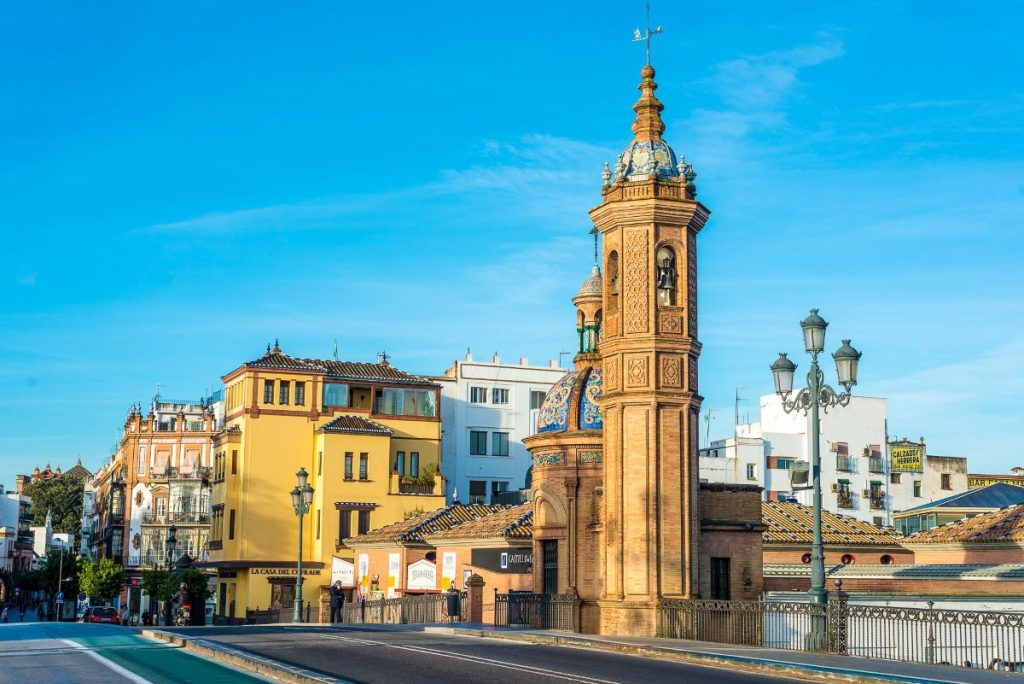
Triana’s beautiful architecture marks this neighborhood’s rich history. Photo credit: Sevilla
History of Triana
Triana’s history dates back over 2,500 years to the Tartessian era. Later, the Romans built a strategically important settlement here to link Hispalis (ancient Seville) to Italica (a Roman city about 30 minutes outside Seville by bus and well worth a visit if you have the time). Under Islamic rule, builders constructed the first bridge linking what would become Triana to the future Seville. However, little remains from this period, as the citadel was destroyed during the reconquest in 1248.
Jumping forward, Triana established itself through its seafaring links. Thanks to Christopher Columbus (whose tomb you can see at the cathedral while taking our Seville In-A-Day Tour), Seville became one of the richest and most important cities in Europe for exploration and trade. Triana established a University of Seafarers, which provided sailors for Magellan and Elcano’s famous circumnavigation of the world. In Plaza del Cuba, you can find a sphere marking mile zero of the first round-the-world voyage.
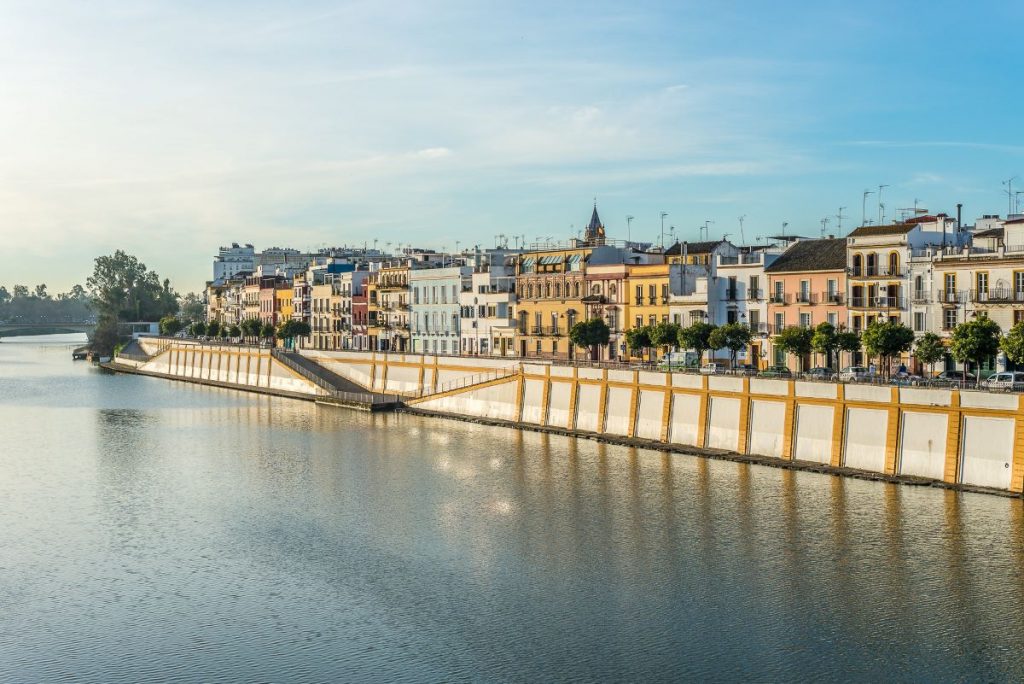
Triana’s long history is intrinsically linked to the Guadalquivir River. Photo credit: Sevilla
Flamenco and Bullfighting
Triana holds the title as the traditional home of both flamenco and bullfighters. In the early 20th Century, Juan Belmonte, a Trianero, introduced the modern style of bullfighting, pulling the bull close to the matador instead of staying far away to avoid the horns. However, he was not the first matador from the area. In fact, the link between bullfighting and Triana is strong, with many streets named after famous toreros who were born in this neighborhood, which faces the bullring on the opposite side of the river bank.
Triana is considered the spiritual home of flamenco in Seville, and some of the most authentic and real flamenco still thrives in the area, late at night in small, local bars. If you’re looking for things to do in Triana Seville at night, you must catch a flamenco show in a local bar for an authentic experience. In the 1950s, city planners moved a lot of the Roma community out of Triana to make way for new, modern developments. Nevertheless, you can still find some traditional corrales de vecinos—traditional communal living quarters centered around a courtyard—dotted around the neighborhood as reminders of the community that once called the area home.
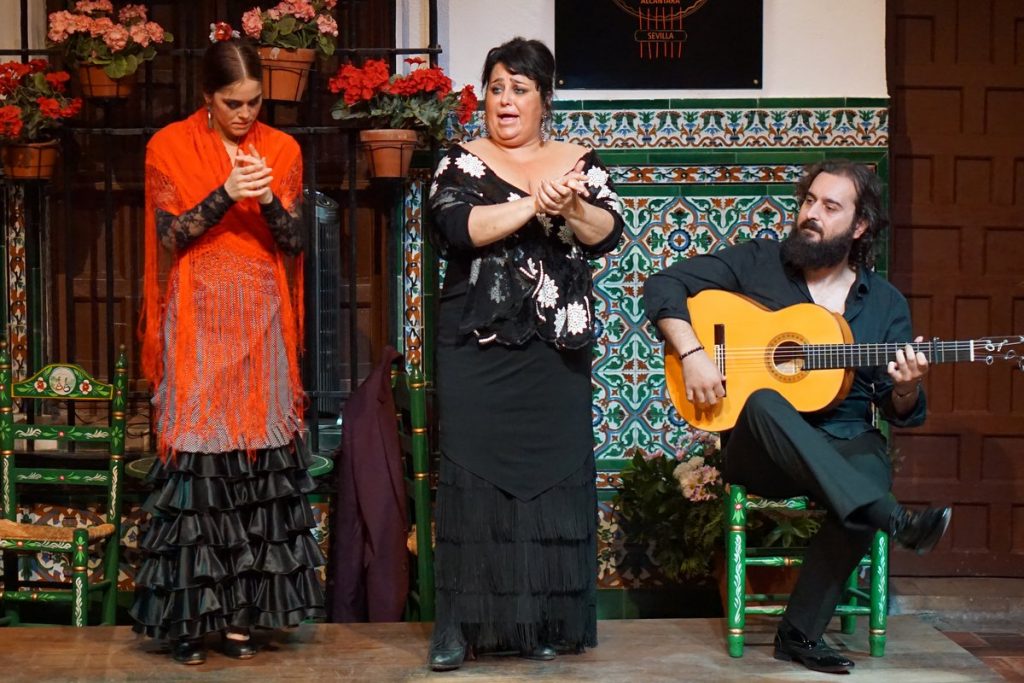
You can’t visit this Spanish gem without taking in a flamenco show.
Artisanry in Triana
No matter where you look in Seville, you encounter the city’s intricate and beautifully designed tiles. For some incredible examples, simply visit the Plaza de España, which builders encrusted with these hand-crafted pieces.
Most of the ornate tiles that you see decorating hotels, churches, and walls along the streets during your wanderings around Seville originated in Triana. These tiles, called azulejos (from the Arabic meaning “polished stone”), have been produced here since Roman times and now symbolize the city. When you visit one of the surviving ceramics workshops, you can purchase an authentic souvenir from your time in Seville.
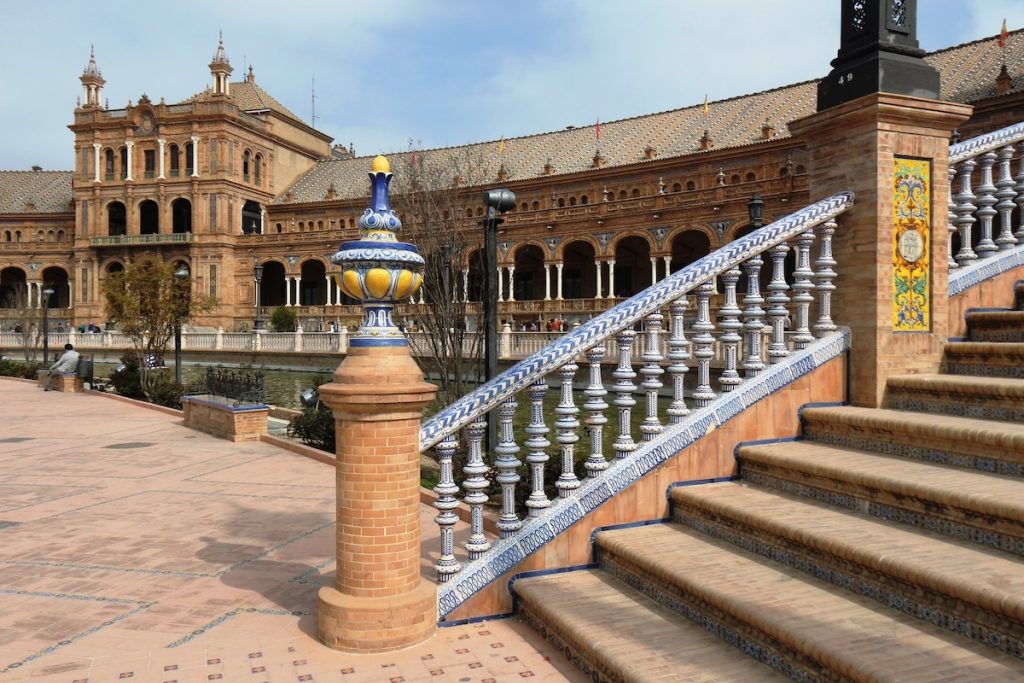
Seville’s Plaza de España showcases the talent of the local ceramic industry. Photo credit: OZinOH
Must-Visit Places in Triana
When planning your visit, you might wonder what to see in Triana or which Triana Seville attractions truly stand out. Exploring a new area can feel overwhelming, but you can prioritize the following key locations that you simply cannot miss:
- Puente de Isabel II (Triana Bridge): This gateway to the neighborhood, completed in the mid-19th century, became a national historic monument in 1976. Pause as you cross the river to marvel at the magnificent city views, especially stunning at sunset.
- Plaza del Altozano: This vibrant plaza, surrounded by bustling bars, introduces you to two iconic statues: the flamenco dancer Monumento al Arte Flamenco and the statue of Juan Belmonte, the legendary torero. Both statues celebrate the neighborhood’s artistic and bullfighting heritage.
- Corral de las Flores: Step back in time at this corral de vecinos on C. Castilla, 16. Admire the locally made tiles, the original well, and the outdoor washing stations, which provide insight into the everyday lives of Triana’s original residents.
- Mercado del Paseo del Arte: If you love art, stroll through this artisan market under the Triana bridge (access via Calle Betis), held every weekend. You can discover ceramics, pottery, and paintings—all handmade by local artisans.
- Capilla de los Marineros: Located at Calle Pureza, 53, this revered chapel houses the Virgen de La Esperanza. Visit the museum inside to learn about Semana Santa and the significance of the Easter processions in Seville.
- Centro Cerámica de Triana: This museum, at C/ Callao, 16, occupies the former Santa Ana factory. On the ground floor, you can explore historical methods of making ceramics, while the upper floor features permanent and temporary exhibits, including works by Aníbal González.
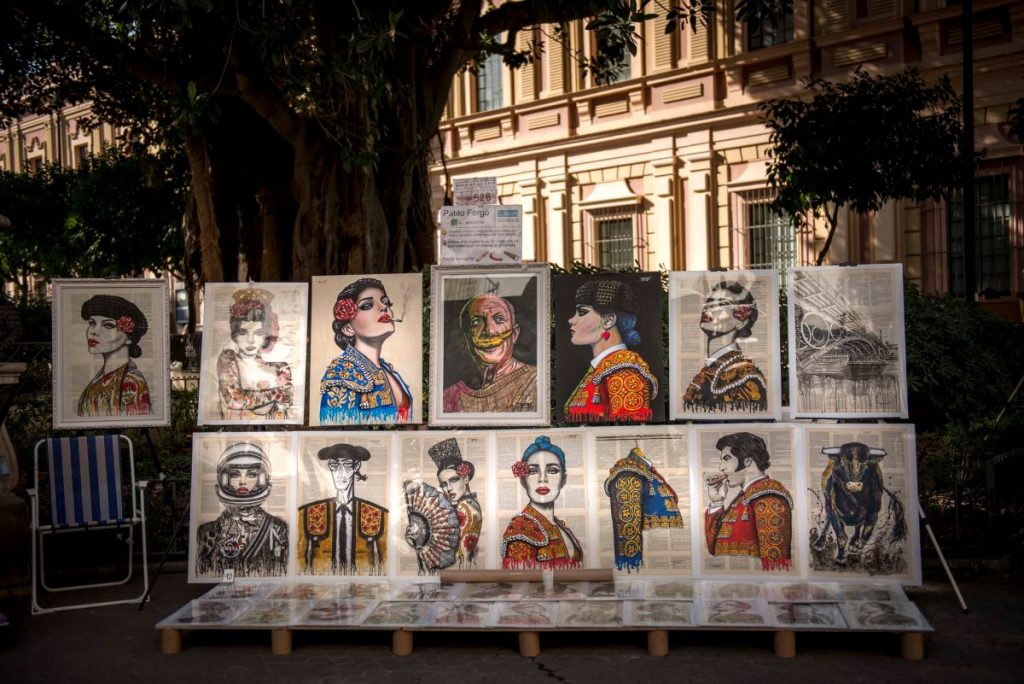
This market is a great place to pick up some local artwork as a token of your time in Triana. Photo credit: Sevilla
Where to Eat and Drink in Triana
Triana offers a wealth of options for breakfast, lunch, dinner, or a quick snack. When you want to take a break, you can choose from traditional markets to riverside tapas bars. Consider these highlights:
- Calle Betis: This lively street overlooking the river provides unmatched views of the waterfront and Seville’s landmarks. You can relax at one of its many bars and restaurants while enjoying sobremesa (time relaxing after a meal to chat) with some of the best vistas in the city. The vibrant atmosphere and delicious tapas make Calle Betis a local favorite.
- Mercado de Triana: Situated on Plaza del Altozano, this bustling market has served as a cornerstone of life in Triana for over 200 years. Sample a variety of Andalusian specialties, including fresh bread, ham, and traditional tapas, all in a lively communal setting.
- Bar Santa Ana: Located at c/ Pureza 82, this bar immerses you in the ambience of Semana Santa year-round. Sample the vermouth and a tapa of payoyo cheese, a cured goat cheese produced only in the nearby Cádiz mountains—a true local specialty.
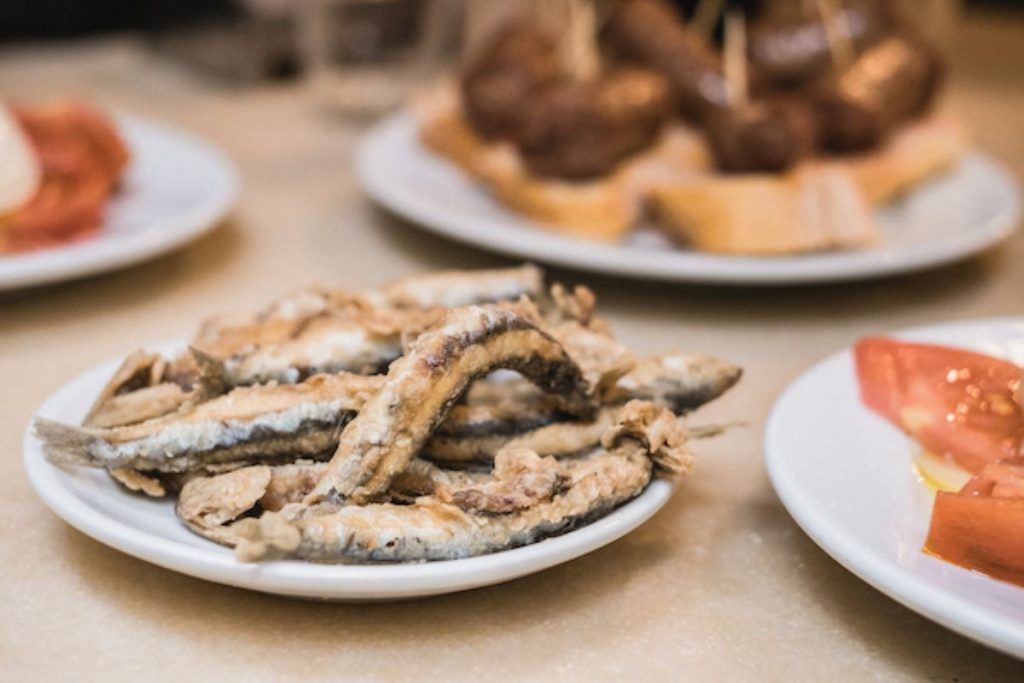
The tapas in Triana are legendary. Try as many as you can!
FAQ: Visiting Triana
What are the must-see attractions in Triana Seville?
- Triana Bridge (Puente de Isabel II)
- Plaza del Altozano
- Centro Cerámica de Triana
- Capilla de los Marineros
- Mercado de Triana.
- Calle Betis for stunning river views.
What are some unique things to do in Triana Seville?
Besides visiting the main monuments, you can:
- browse artisan ceramic shops,
- enjoy authentic flamenco in a local bar,
- wander the Mercado del Paseo del Arte on weekends, and
- discover traditional corrales de vecinos for a glimpse into Triana neighborhood life.
Where are the best places to eat in Triana Seville?
You should try the tapas bars along Calle Betis, sample local bites at Mercado de Triana, and visit Bar Santa Ana for a taste of Semana Santa culture.
Is Triana different from the rest of Seville?
Absolutely, the Triana neighborhood boasts a distinct identity, history, and culture. Locals proudly say they are from Triana, not Seville, and the area is renowned for its deep ties to flamenco, ceramics, and seafaring traditions.
What is the best way to explore what to see in Triana?
You will get the most out of Triana by exploring on foot. Cross the Triana Bridge, wander its lively streets, visit its main attractions, and enjoy drinks or tapas by the river. Alternatively, guided tours and food tours help you discover hidden gems and experience the authentic Triana neighborhood atmosphere.
Insider’s Tip: Looking for more spots to try in this neighborhood? Sign up for our small group Food Tour of Triana where our experts will have you covered on all things eating and drinking in Triana!
